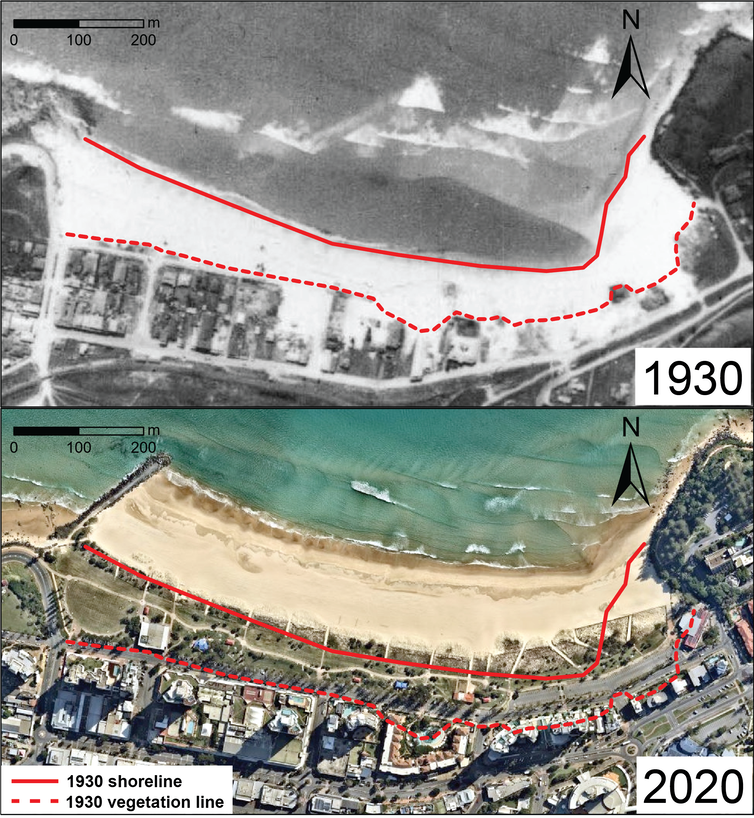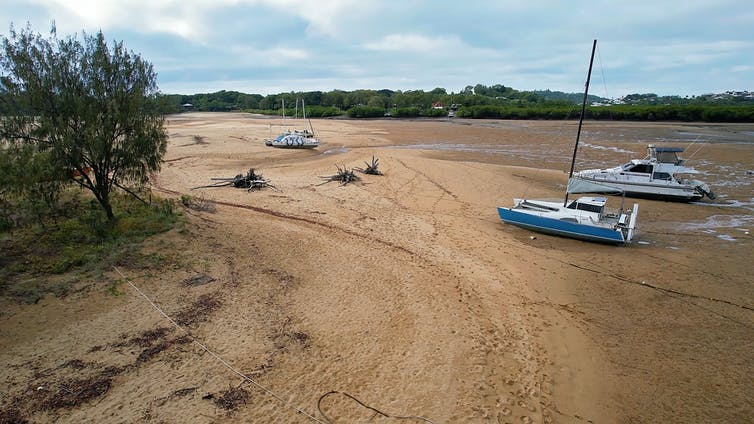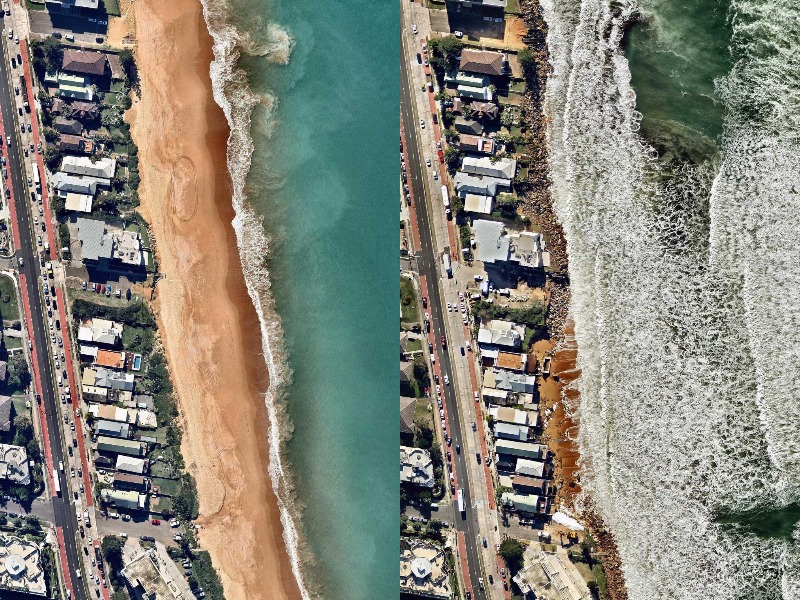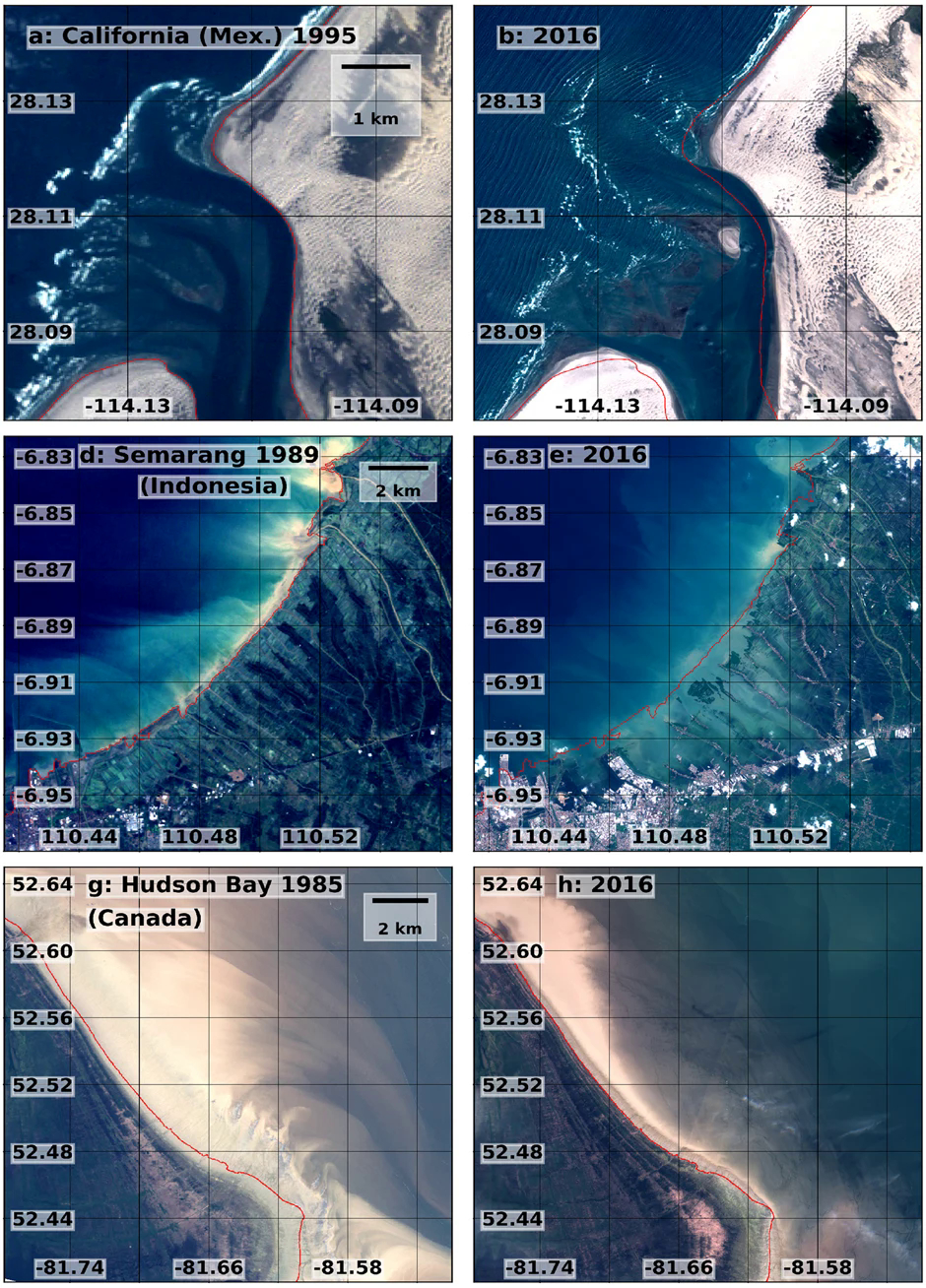“Climate change is not real”, “The Earth is not warming” and “sea level does not rise higher”, that’s what you often see in the discussion threads of climate change skeptics.
Sometimes they give some evidence, for example the below satellite image of Coolangatta coast in Australia at 2 times, 1930 and 2020.
Their argument was: If sea levels rise, why hasn’t Coolangatta’s coastline eroded, but rather widened after 90 years? The local government also confirmed they have almost no artificial interference or reclamation on this beach.
So what’s really going on?

Coolangatta Beach in Australia at 2 times in 1930 and 2020.
Beaches expand despite sea level rise
According to climate change studies, the Earth’s temperature has increased by 1.09 degrees Celsius compared to pre-industrial times. The current sea level is also 20 cm higher than it was in the mid-18th century.
As a result of sea level rise, it will swallow beaches and submerge reef islands. A study published last year in the journal Nature Climate Change predicted that more than a third (37%) of the world’s beaches could be gone by 2100. Of that, Australia alone could lose up to 12,000 km. sandy beach.
But oddly enough, a new study published in the journal Ocean & Coastal Management this year suggests the opposite. Some coastlines in Queensland and New South Wales are expanding instead of eroding.
This is clearly contrary to our general understanding of how climate change affects the coast. It even leads to confusion and becomes the source”fake news” for those who oppose climate change and sea level rise.

Expansion of Bucasia Beach in Australia from 1953 to 2020.
To look at this phenomenon, a team of scientists at the University of Queensland used aerial photography and satellite records to find out, what exactly happened?
The results show that at least 15 beaches in Queensland, stretching north from Cooktown to Coolangatta, have been gradually encroaching on the sea since 1930. Along with that, the phenomenon has also been observed in a number of European countries. Africa and Southeast Asia.
While some of the beach extensions in China can be explained by man-made reclamation, the beaches in Australia are relatively free of significant human impact.
Beaches with a positive sediment budget
Turns out, that’s what led to the expansion of the beaches. Scientists say an expanding or eroding beach depends on a concept known as “n .”coastal sedimentary veins“.
It’s the total amount of sand, rock, and sediment that can move out or into the beach over time. A positive sediment budget is when more sediment accumulates on the beach than it erodes. Negative sediment budgets are the opposite, as more sand is removed from the shore than is brought in.

There are many factors that affect the sediment or sand budget on the coast, not just sea level rise.
The movement of sediment in and out depends on many factors, from waves and tides to ocean currents and even by just a storm. For example, in 2015, people living on the coast of Porthleven beach in the UK woke up to find all the sand on the beach disappeared overnight.
It was the night that a powerful storm swept through the southwestern part of their area. No one really knows where the sand has gone. But all the beaches were suddenly restored to their original state just a day later. Sand is back.
For Queensland’s expanding beaches, such as Bucasia. It is being accreted by sediment coming from a nearby river. Other areas, such as the Suriname Sea in South America, have developed because large, fast-flowing rivers transport large amounts of silt here.
Over time, the positive sediment budget will promote the expansion of coastlines, which will overcome the erosion that can be caused by sea level rise. In other words, the amount of sand reaching the coast is still greater than the amount lost due to climate change.

All the sand at Porthleven beach in England was pulled in and out in one night.

Boats in Bucasia run aground after low tide.
Not an excuse to be subjective
However, all this does not mean that sea level rise erosion is not a threat to future coastlines. Instead, we should ask a question: What happens when according to forecasts, the rate of sea level rise continues to increase rapidly?
The Intergovernmental Panel on Climate Change (IPCC) projects that sea levels will be up to 1.01 m higher (compared to 1995–2014 levels) by 2100, if global emissions continue unabated.
Moreover, the sea level is rising faster and faster. The IPCC found it increased by 1.3 mm per year during 1901–1971, 1.9 mm per year in 1971–2006 and 3.7 mm per year in 2006–2018.


Some of the world’s beaches are actually shrinking over the past decades.
This sea level rise will eventually be so great that the current positive sediment budget can no longer compensate for it. This will also eventually cause erosion in beaches that are still open.
Therefore, the fact that coastlines are encroaching at present is not evidence that sea levels are not rising or cannot erode coastlines. That is just the fallacy of climate change skeptics.
Refer to Theconversation
